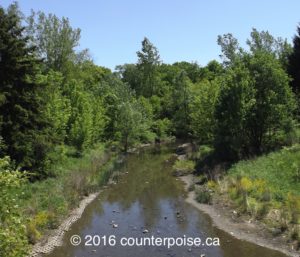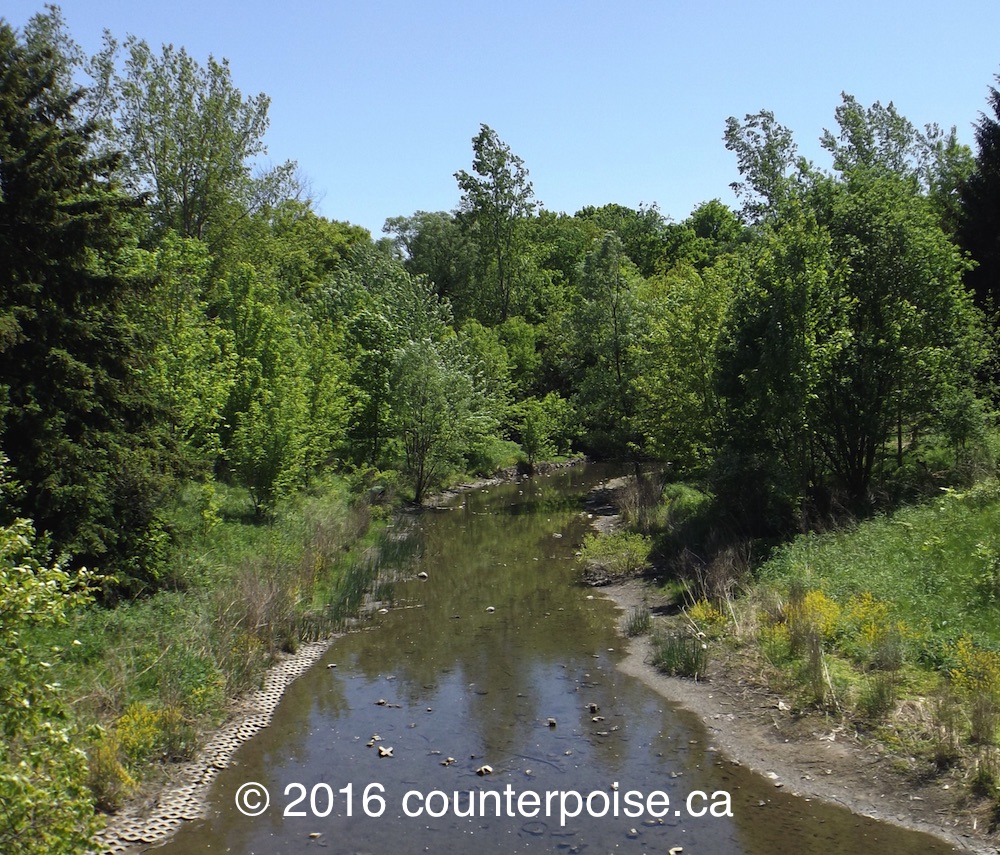Disclaimer: My references to the writings of other people–both indigenous and non-indigenous–do not in any way imply that they share my views on this matter. The opinions expressed here are my own and do not necessarily reflect those of my family, friends or associates.
Note One: In this post, I will primarily be focussing on First Nations people living on- and off-reserves. For brevity’s sake, I will not be covering Inuit- and Metis-related issues. But when I include information about indigenous people generally, e.g., statistics, it sometimes incorporates Inuit and Metis.
Note Two: The nature photos, which I took during walks in my neighbourhood, have nothing to do with the contents of this post. I found working on this entry so mentally challenging that I sometimes recharged by playing slideshows of these images.
Part One – A Introduction
I realize there are a number of interpretations of aboriginal integration, so I am clarifying at the outset that my recommended version is not the type that advocates assimilation. As I explained in my “Canadian Aboriginal Integration is Better Than Assimilation or Parallelism” post, August 7, 2011, I am in favour of aboriginals maintaining their rights, but also their Canadian citizenship. However, I believe that any rights maintained should not harm aboriginals or non-aboriginals. In other words, I recommend a selective retention of rights. Will explain more about what I mean by “selective retention” in the “Integration” section of Part One.
I also think that any rights upheld should not erode Canadian sovereignty. Will have more to say about this in the “Ordinary Canadians” section of Part Three.
Am dividing up this topic into three separate counterpoise.ca posts as follows:
• Part One of Three – Why I Think Canadian Aboriginal Integration is Better Than Parallelism or Assimilation – Overview
• Part Two of Three – Why I Think Canadian Aboriginal Integration is Better Than Parallelism or Assimilation – Integration is Already Happening in Many Places
• Part Three of Three – Why I Think Canadian Aboriginal Integration is Better Than Parallelism or Assimilation – More People Need to be Involved With Indigenous Policy Decision Making
Part One – B Three Main Policy Viewpoints – My Interpretation
In a number of other posts on this blog, I said I think Canadian aboriginal integration is better than parallelism or assimilation. I agree with a reader of my blog that I need to elaborate on what I mean by this.
Below are my interpretations of the three main policy viewpoints.
Part One – B.1 Parallelism
The Liberal government of Pierre Elliot Trudeau tried to implement the 1969 White Paper, which advocated assimilation, but this concept was rejected by many of the country’s aboriginal leaders. Consequently, the White Paper was shelved. For further information on the events before, during and after the White Paper, see my “Canadian Aboriginal Integration is Better Than Assimilation or Parallelism Post,” August 7, 2011.
Alan Cairns was the first to use the term parallelism, which he described as “Aboriginal and non-Aboriginal communities travelling side-by-side coexisting but not getting in each other’s way.” But Cairns is not a proponent of the term that he coined. Parallelism is sometimes portrayed as a two-row wampum, that is, aboriginal and non-aboriginal collectives following separate cultural paths. The preservation of indigenous knowledge is one of the principal self-determining aims of the aboriginal route.
Parallelism is also depicted as either “nation-to-nation” constitutionalism or a third order of government. The 1996 Royal Commission on Aboriginal Peoples (RCAP) advocated parallelism, as did the 2015 Truth and Reconciliation Commission of Canada final report executive summary.
Aboriginal leaders frequently talk about sovereignty in connection with their wish for “nation-to-nation” relations with Canada, the provinces and territories, but it is sometimes not clear what they mean by these terms. Are they talking about nation as in operating as a self-sufficient entity within the Canadian federation, or as in operating outside of it? Do they mean sovereignty as in good governance, or as in separate “nations” from Canada?
As I explained in my counterpoise.ca review of Cherokee/Greek Thomas King’s The Inconvenient Indian, February 11, 2014, “sovereignty has various interpretations amongst aboriginal groups.” I have no problem with aboriginal communities being directly involved with decisions that affect them, but I do not agree with these communities operating outside of the federal, provincial and territorial framework.
 |
| Creek from bridge, May 22, 2015 |
Part One – B.2 Integration
Generally speaking, integration proponents believe it is best for aboriginals to maintain their Canadian citizenship, and to be actively engaged in national discourse. Although many integrationists want to see aboriginal culture preserved, they recognize that sometimes there has to be a partnership or overlap with mainstream Canadian federal, provincial and/or territorial jurisdictions.
Frances Widdowson and Albert Howard summarize integrationism as “inclusion, universality and progress,” and contend there are two main versions: liberalism and political economy. They see the liberalism branch as valuing individualism over collectivism. Political economists believe that goods and services should be available to all equally, not just to those with tribal affiliations.
Some analysts believe that assimilation is an extension of the integrationist position, but I see it as distinct. This is because some integrationists think aboriginals have rights over and above other Canadians, such as those enshrined in the Constitution. My view is what separates integrationists from assimilationists is the special rights issue. So I think assimilation needs to be a separate category.
I am of the view that aboriginals should maintain their Constitutional rights, but there needs to be a review of cultural practices that may harm aboriginals or non-aboriginals. If cultural practices are detrimental to either race, then natives should not be able to argue that they have a right to practice for traditional reasons. Two examples of this are bad medicine and the historically negative treatment of women by some tribes. So that is what I mean by selective retention of rights.
In addition, I do not think that indigenous rights should infringe on Canadian constitutional sovereignty. That is why I was concerned with what Gordon Gibson had to say in his analysis of Section 25 of the Charter. He said “if parts of the Charter offend traditional aboriginal practices, those parts of the Charter are not enforceable as against Indian governments.” This section needs to be revised to make it clearer that any practices that might infringe on Canadian sovereignty cannot be upheld as constitutionally protected.
 |
| Duck spreading wings, October 11, 2015 |
Part One – B.3 Assimilation
The 1996 Royal Commission on Aboriginal Peoples Report described assimilation as colonial and Canadian authorities asserting that “European ideas about progress and development were self-evidently correct,” and stated that these ideas should not be imposed on aboriginals.
Indigenous and Northern Affairs Canada labelled the 1820-1927 era as “Legislated Assimilation” and 1914-1982 one as “New Perspectives.” Even though there were quite a few improvements to aboriginal policy during the latter period, it still included the 1969 White Paper, which many aboriginal leaders considered assimilationist. As previously mentioned, the White Paper was shelved.
It is rarely noted that a third of aboriginals do not identify themselves as such in the federal census. But this needs to be factored into any discussion on aboriginal policy. Yes, it is true that some of these people likely assimilated because of colonial polices, but others felt they were better off joining the mainstream.
In Bad Judgment, John Reilly said that his friend, Austin Tootoosis, a Cree healer, described five levels to assimilation. The first is when aboriginals follow their traditional ways, and are usually in good shape psychologically. Level five is completely assimilated individuals who are usually well mentally. It is levels two through four where difficulties can occur because people have “no real identity or sense of direction.”
I agree with Tootoosis that problems can occur as he described. But there are many different outcomes that can result in levels two through four, and some of them may be favourable. For instance, integration can fall into this range.
Part One – C Why My Personal Journey Has Led Me to Conclude That Integration is the Best Option
As I have explained in other posts on this blog, my parents got involved with indigenous issues when I was six, so I grew up with this matter constantly around me. My work in aboriginal organizations, in Southern and Northern Ontario and the Northwest Territories, primarily during the 1975 to 1987 period, has given me a perspective that a lot of people do not share.
My views on this issue have been influenced by four factors. The first is that I felt pressured to carry on my mother’s aboriginal involvement after she passed away in 1976. The time period before and after her passing was when some indigenous groups and their “native support” partners were establishing a national presence, e.g., voicing opposition to the Mackenzie Valley Pipeline, due to unsettled land claims. Many of the people my mother had aligned herself with naturally hoped I would carry on where she left off.
But I had numerous concerns about this. In fact, these misgivings were so strong that I told a native support representative that my mother was a “hard act to follow.” When I realized that my apprehensions were mostly falling on deaf ears, I tried to mask my self-doubts with an outward “crusader zeal.” But this crusader mask only made things worse in the long run.
The second factor was that it was the 1970s, when attitudes were different than they are now. I thought it was better for me to go with the flow, rather than challenge other people’s agenda setting for me. I realize now that, in the eyes of some people involved with the “cause,” taking this on was a lifetime commitment, but I did not see it that way.
The third is that my personality is totally unsuited to working in the indigenous rights field. I have always been a very opinionated person, and this trait alone increased the odds of my having difficulties. In addition, I have very strong convictions, which frequently put me at loggerheads with some equally strong-willed indigenous people.
Fourth: despite the fact that I had more than a decade of background with aboriginal issues before I started working in the organizations, I now realize it would have been better if I had known more about the historical aspects of the indigenous situation beforehand. If I had known this, it would have been easier for me to comprehend all that I went through. This is why I agree that indigenous history should be included in the K-12 curriculum. But this information needs to be taught in a balanced manner, presenting all sides, not the all-too-common “aboriginals are always right and non-aboriginals are always wrong” narrative.
Nevertheless, I do not want to give the impression my experiences were entirely negative. I have lots of happy memories, such as attending drum dances and stage plays. I also know that many of my late parents’ interactions were uplifting for them.
 |
| Autumn splendour October 8, 2015 |
One of the highlights of my work in this area was travelling to remote communities in the Northwest Territories and Northern Ontario, e.g., to provide advice and assistance on band library development. Because airplanes usually only fly in and out of these places once or twice a week, I sometimes stayed for a few days, either in lodges set aside for visitors, or in tents, or in the homes of band librarians who requested my visit. Will never forget the spectacular scenery I saw from bush plane windows. However, I also had some more harrowing adventures, such as a helicopter ride through a blizzard, and a water taxi trip across a turbulent bay.
In addition, I know what it is like to live with few amenities. When my ex-partner and I were in Yellowknife, Northwest Territories, during the 1975-1976 period, we lived in a tent on Long Lake Beach, a few kilometres outside of the city limits. He did not want to pay for a campsite, so we were up on the rocks. Then for about ten months, we lived in a house in Yellowknife’s Old Town with no running water, no plumbing, and, for the first three months or so, only plastic covering the windows. Have not forgotten the hassles of using a “honey bucket” for a toilet, and hauling in oil from the road to heat the furnace. Because water was poured into a barrel inside our front door once a week at varying times, we could not lock the door. I really hated having to boil water on the stove to have a sponge bath.
I also realize that reserve water problems are not limited to Canada’s north. After taking a shower at one reserve house south of the 60th parallel, I was covered with a rash for quite a few days.
The most profound aspect of my involvement was that a Slavey (Dene) woman contributed substantially to saving my life in 1972. I was suffering from a severe infection that a Toronto doctor claimed was all in my mind. As a result, I regularly popped 292s, and became more and more frail. I was staying with this Slavey woman in Yellowknife, and was supposed to board a plane to the remote community of Fort Simpson. When the taxi driver came to take me to the airport, she took the suitcase out of my hand and gave it to the driver. She said “you’re not taking her anywhere but the hospital.” I spent three weeks in Yellowknife hospital and almost died. In the early 1980s, I learned this woman had passed away under tragic circumstances.
So, by the mid-1980s, I had learned first-hand (albeit temporarily) how difficult and challenging life can be for indigenous people. But the memories that have been permanently etched in my psyche are those that involve indigenous people reaching out across the racial divide, like the selfless act of the Slavey (Dene) woman in 1972. The memories I would often rather forget were the frequent wranglings over what made us different from each other.
During my years with the organizations, I frequently advocated for separate systems for aboriginal people But even at that time, I harboured inner doubts about this route. These fears were heightened after aboriginal rights were enshrined in the Constitution in the 1980s. From the mid-1980s onwards, I became increasingly disillusioned with the “cause,” and I think that constitutional entrenchment played a role in this. It seemed to give some of my aboriginal associates the view that they were racially superior to me.
What also contributed to my angst was that the residential schools issue became more and more the focus of scrutiny from the mid-1980s onwards. I am very much aware of the damage done to many former students by the schools because I worked with quite a few “survivors.” But I also found that it occasionally became an excuse for questionable behaviour. For instance, one “survivor,” who I had known since the mid-1960s, viciously betrayed me in the late 1980s. When I confronted her about this, she blamed her behaviour on her time at a residential school. But I think her main motivation was that she was angry with me over a political difference of opinion, and consequently spread the falsehood to get revenge.
During the 1976 to 1982 period, I was employed by, or a volunteer for, a number of what at the time were referred to as “native support” programs. This sometimes involved arranging for aboriginal leaders from the north to speak to groups in the south. Frequently the churches initiated and funded these projects. For instance, there was an inter-church group called Project North (Anglican, Lutheran, Mennonite, Presbyterian, Roman Catholic and United Church) that lobbied in support of land claims. In fact, Project North is mentioned in Volume 1 of the Truth and Reconciliation Commission of Canada final report as a “concrete expression” of the churches demonstrating cooperation and involvement on aboriginal issues.
That is why it bothers me so much when many residential school “survivors” make it sound like the churches were always their adversaries, when the truth is the churches were sometimes the ones that lobbied the hardest for aboriginal rights to be preserved. For further information on my views about the residential school controversy, see my September 7 and November 6, 2015 posts elsewhere on this blog.
As mentioned earlier, I harboured doubts about the “separate systems” approach to dealing with aboriginal issues. But I did not realize the extent to which national indigenous groups were lobbying to ensure this concept became enshrined in federal government policy.
One of the most prominent examples of this “separate systems” advocacy was the 1996 Royal Commission on Aboriginal Peoples (RCAP) Report. I did not really analyze this report until the early 2000s. But I realize, now that I have, its overemphasis on parallelism, and under-emphasis on the interconnectedness between aboriginal and non-aboriginal societies, was likely one of the main driving forces behind my increased disillusionment.
Tsimshian author Calvin Helin’s Dances With Dependency (2006) helped me to come to grips with another aspect of my discouragement: that many aboriginal communities were overly dependent on government assistance, and that this was negatively impacting community cohesiveness. For more information about Helin’s book, and other books by him that had an impact on me, see my February 10, 2015 post.
My reading of Australian anthropologist and linguist, Peter Sutton’s, The Politics of Suffering (2011) further cemented my view that some aspects of aboriginal traditions, such as bad medicine, and the abuse of women by some tribes, were best forgotten. See the “Peter Sutton” label in the right sidebar for more information on this.
I realize there were and are many positive developments that have resulted from indigenous people asserting their rights, and exposing the harm done by many aspects of the residential schools. But I feel the attention has swung too far from personal responsibility to identity politics.
Fortunately, there are indigenous people who share a lot of my concerns, and who I keep in touch with. I realize the risks they take are often far greater than mine, because there is so much pressure on them to “toe the party line.” But they speak out anyway–kudos to them.
 |
| Robin, March 16, 2016 |
Part One – D Too Much Emphasis Being Placed on the Parallelism Viewpoint
My contention is that all levels of government–federal, provincial, territorial and municipal–frequently place too much emphasis on communicating with the three main indigenous organizations, that is, the Assembly of First Nations (AFN), the Metis National Council (MNC) and the Inuit Tapiriit Kanatami (ITK). This top-level communication means that the focus tends to be on the parallelist viewpoint, particularly in the case of the AFN and the MNC. This post will be concentrating on the AFN’s version of parallelism, e.g., when AFN spokespeople talk about “nation-to-nation” dialogue. My overall point is that some on-reserve and urban aboriginals may not agree with this viewpoint.
In my September 5, 2011 post entitled “Aboriginal Issues During the ‘Culpability Era,'” I explained that only the chiefs elect the national chief of the Assembly of First Nations (AFN). This is the equivalent of the mayors of cities choosing the prime minister. So it should not be assumed that all reserve residents support what the national chief is doing.
Differences of opinion can also occur regarding on-reserve governance. For instance, some reserve residents have brought public attention to band mismanagement, and have frequently been severely reprimanded for doing so. But as Ojibway writer, Richard Wagamese, rightly pointed out, “there is no colonialism inherent in accountability. . .and there is no besmirching a people’s integrity by asking their leadership for honesty.”
Another factor to bear in mind is that the Assembly of First Nations (AFN) only represents those First Nations living on-reserve. Yet more than half of aboriginals live in urban areas. Moreover, these city-dwellers may not be as keen on parallelism as their reserve counterparts. The 2010 Urban Aboriginal Peoples Survey (UAPS), found that seven out of 10 were comfortable with their Canadian citizenship. Although these nationalists may not see themselves as integrationists, that may be essentially what they are doing, if they agree with Canada’s rights and responsibilities as citizens.
And, as previously mentioned, a third of aboriginals do not self-identify as such in the federal census. So they have chosen the assimilation route. Although I am not necessarily advocating assimiliation, I think this factor has to be taken into consideration.
Consequently, the aboriginals who advocate parallelism may represent less than half of the national indigenous demographic. Despite this, the parallelists receive a disproportionate amount of the media attention. I think the non-parallelist perspectives of the integrationists and assimilationists should be given more weight.
Bibliography
Adams, M. & Gosnell-Myers, G. (2013, January 22). Don’t forget Canada’s urban aboriginals. They’re not just passing through. Globe and Mail: globeandmail.com
Cairns, A.C. (2000). Citizens Plus: Aboriginal People and the Canadian State. Vancouver: UBC Press.
Cairns, A.C. (2005). First Nations and the Canadian State. Kingston: Queen’s University.
Gibson, G. (2009). A New Look at Canadian Indian Policy. Fraser Institute.
Government of Canada (2014, July 23). The rights and responsibilities of citizenship. cic.gc.ca
Helin, C. (2006). Dances With Dependency: Indigenous Success Through Self-Reliance. Vancouver: Orca Spirit.
Indigenous and Northern Affairs Canada (2013, October 21). First Nations in Canada. aadnc-aandc.gc.ca
King, T. (2012). The Inconvenient Indian. Doubleday Canada.
Liebsman, H. (2005). In Search of a Postcolonial Theory of Normative Integration: Reflections on A.C. Cairns’ Theory of Citizens Plus. 38 (4), 955-976.
Reilly, J. (2014). Bad Judgment. Alberta: Rocky Mountain Books.
Royal Commission on Aboriginal Peoples (1996). Highlights from the Report of the Royal Commission on Aboriginal Peoples. Retrieved October 15, 2015 from Aboriginal Affairs and Northern Development Canada: aadnc-aandc.gc.ca
Sutton, P. (2011). The Politics of Suffering: Indigenous Australia and the end of the liberal consensus (2nd ed). Melbourne University.
Travato, F, Abada, R & Price, J.A. (2015, March 4). Urban Migration of Aboriginal Peoples. From Canadian Encyclopedia: canadianencyclopedia.ca
Truth and Reconciliation Commission of Canada (2015, December). Final Report: Canada’s Residential Schools: The History, Part 2, 1939-2000. trc.ca (archived)
Truth and Reconciliation Commission of Canada (2015, June 2). Honouring the Truth, Reconciling for the Future: Summary of the Final Report. trc.ca (archived)
Wagamese, R. (2015, October 9). Accountability and Band Finances. From First Nations Drum: firstnationsdrum.com
Widdowson, F, & Howard, A. (2013). Approaches to Aboriginal Education in Canada. (Widdowson, F, & Howard, A., ed). Brush Education.
